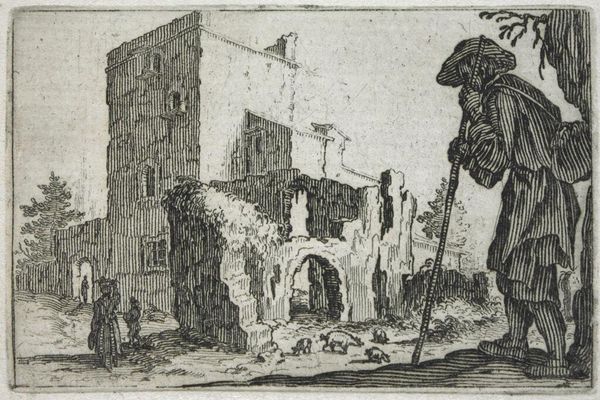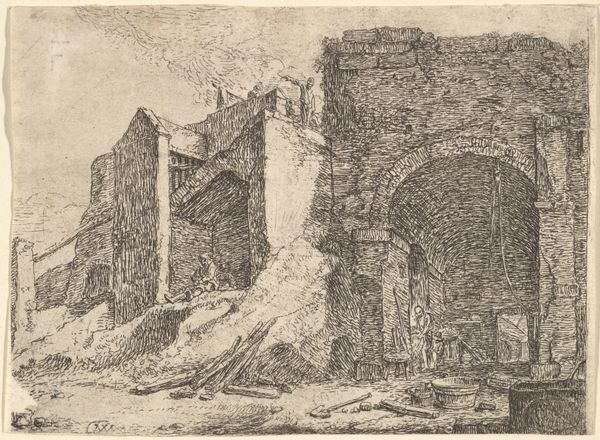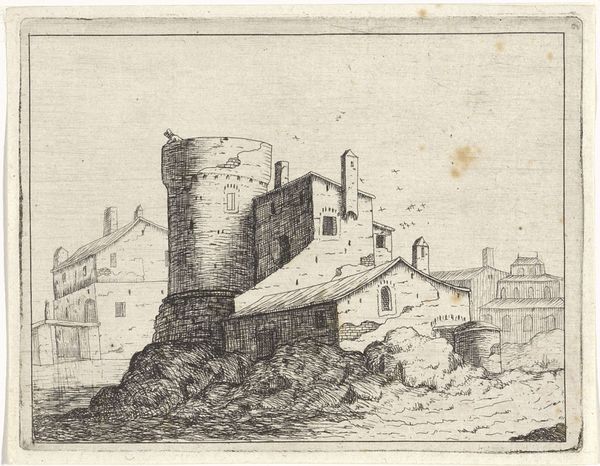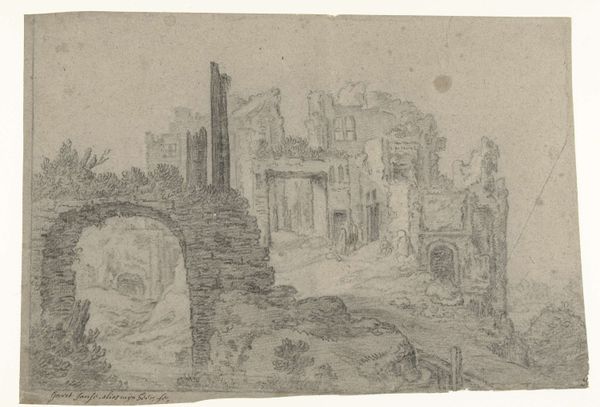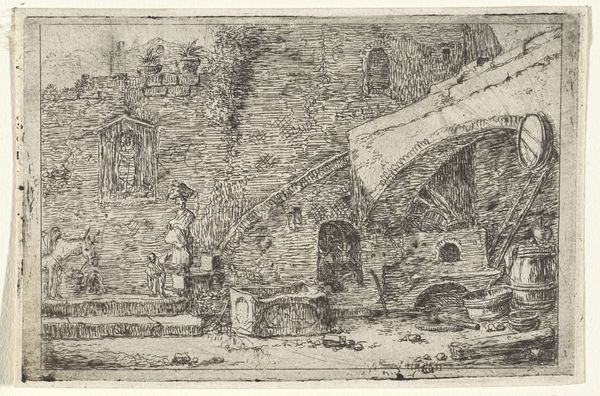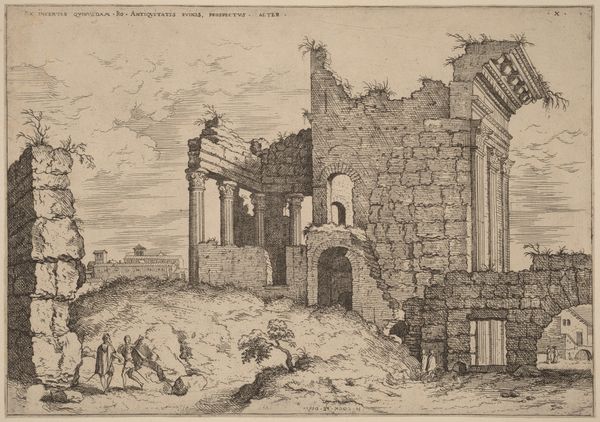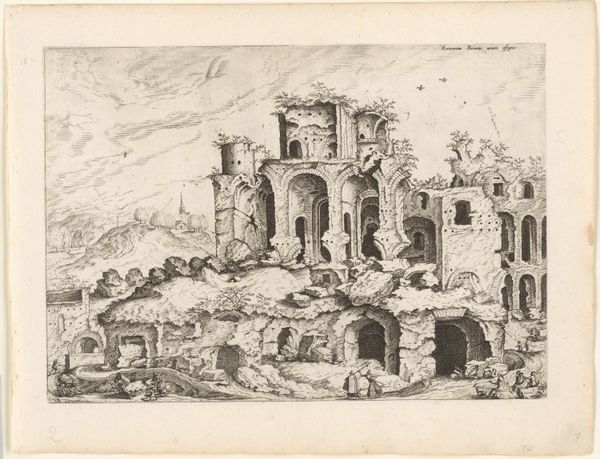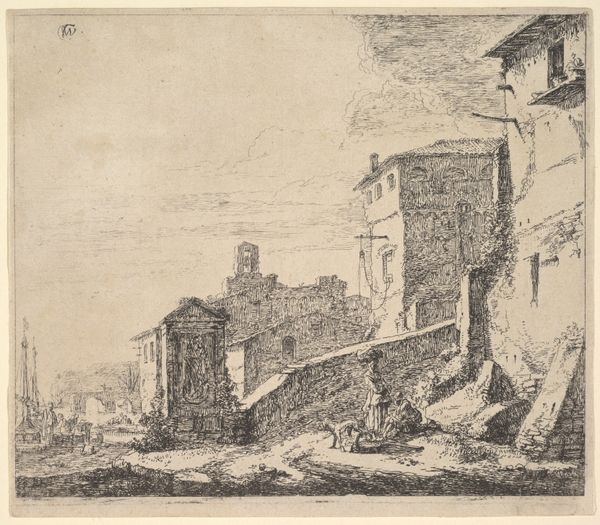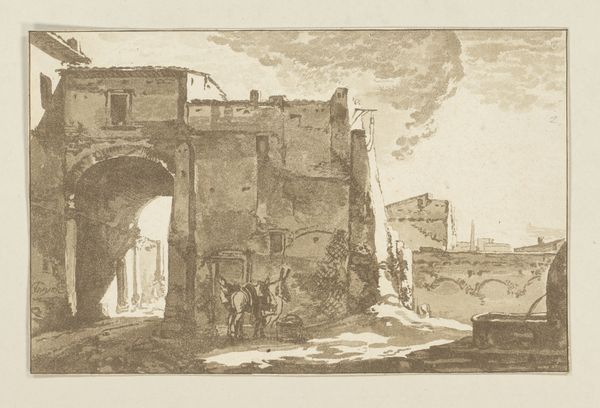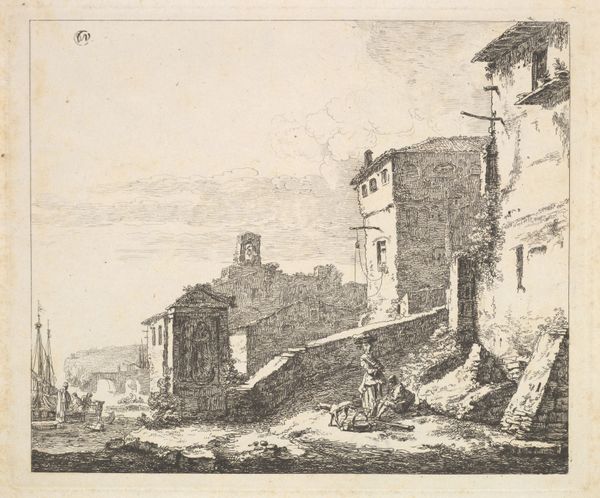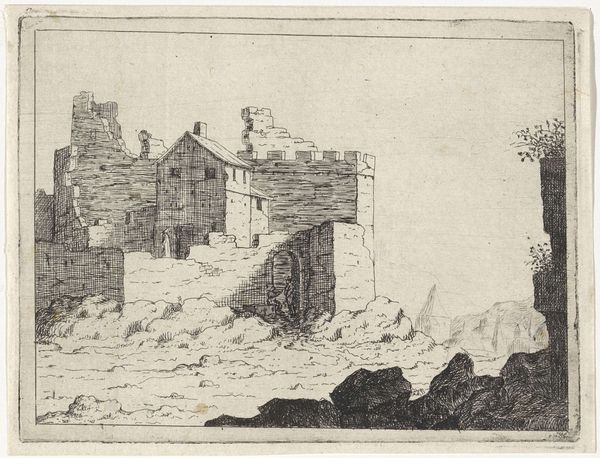
drawing, etching
#
drawing
#
quirky sketch
#
baroque
#
mechanical pen drawing
#
pen sketch
#
etching
#
old engraving style
#
landscape
#
personal sketchbook
#
sketchwork
#
pen-ink sketch
#
pen work
#
sketchbook drawing
#
sketchbook art
#
realism
Dimensions: height 95 mm, width 121 mm
Copyright: Rijks Museum: Open Domain
Editor: So, this etching, "Path to a Ruined Gateway" by M. Schaep, was created around 1648. The stark lines give it a kind of solemn feel, almost like a document of a bygone era. I am interested in how the technique emphasizes the crumbling facade over everything else. What are your immediate impressions when looking at this work? Curator: Immediately, the structural dichotomy is striking. Note the artist's calculated use of line weight and density. The ruined architecture dominates, built upon horizontal and vertical lines that intersect, giving it the effect of standing as both the beginning and end. How would you say the formal qualities contribute to its meaning? Editor: The intricate cross-hatching builds texture to suggest decay and perhaps instability. The stark contrast with the lighter background seems intentional, does it draw your eyes in? Curator: Precisely! That starkness creates a visual hierarchy, foregrounding ruin through varied linear densities, while simultaneously suggesting depth. Consider the geometric purity of the arch juxtaposed with the crumbling stone: It is about more than dilapidation; observe how it makes you feel and where it guides your gaze. What can we tell about space? Editor: It feels shallow; there are very few layers of depth that build any dimension or add interest. The human figures seem small, almost swallowed. Curator: Indeed. By minimizing spatial depth and diminishing the figures, Schaep forces us to contemplate the nature of the arch and the ruins. Its success hinges upon precisely calibrated lines, drawing the observer into a meditation on time and mortality itself. Editor: That makes sense! Thank you; now I’m more appreciative of what initially looked like a simple drawing.
Comments
No comments
Be the first to comment and join the conversation on the ultimate creative platform.

